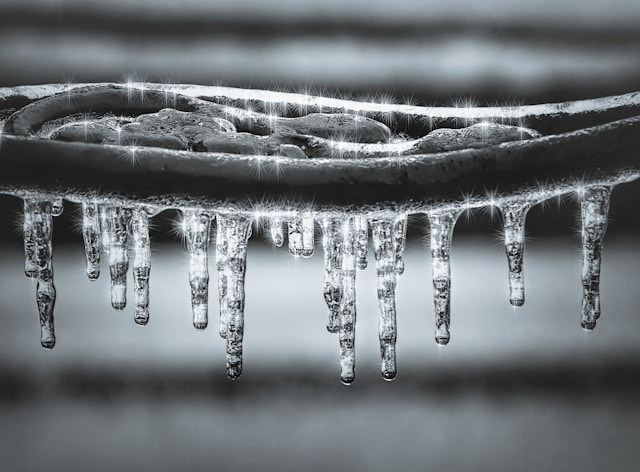Pipe insulation is a low-cost way to boost the energy efficiency of domestic, commercial and industrial HVAC systems and a good way to ensure the continual performance of water pipes.
And the best part is that antifreeze pipe insulation will stop pipes from freezing in areas like warehouses, uninsulated loft spaces and basements too.
Interested? Let’s find out more about how pipe insulation can stop your pipes from freezing.
Table of contents:
- The best pipe insulation to prevent freezing
- How to insulate outside water pipes from freezing
- Final thoughts
The best pipe insulation to prevent freezing

In domestic situations, it’s not uncommon for a water tank to be in a basement or uninsulated loft. The water tank will be insulated, so the pipes should be too to keep overall efficiency up and costs down.
It’s also prudent to use pipe insulation when you have pipes leading from an external rainwater harvesting or water storage tank to the indoors. If the water freezes, it could not only stop the use of the water but could cause damage to the pipes too. For a small investment, you can prevent this.
For commercial and industrial applications, it’s wise to use pipe insulation on large pipework on the ceiling of warehouses or factory floors for example, as this could shut down a business if the pipes are frozen.
As well as being low-cost, pipe insulation can provide some noise dampening so it prevents the sound of fluids travelling through pipes. Fire-rated pipe insulation stops pipes from melting too so can prevent further fire damage.
How to insulate outside water pipes from freezing

To insulate outside water pipes from freezing, follow these steps:
Step 1: Select insulation
Choose insulation sleeves or foam tubes specifically designed for pipe insulation. Ensure they are the appropriate size for your pipes.
Step 2: Clean pipes
Before applying insulation, clean the exterior of the pipes to remove any dirt or debris.
Step 3: Cut insulation
Cut the insulation sleeves or foam tubes to the appropriate length for each section of the pipe.
Step 4: Apply insulation
Slide the insulation sleeves or foam tubes onto the pipes, covering them completely. Pay special attention to any joints, bends, or valves, ensuring they are adequately covered.
Step 5: Secure insulation
Use duct tape or zip ties to secure the insulation in place, especially in areas where the insulation might slip or move.
Step 6: Seal openings
Seal any gaps or openings in the insulation with additional insulation or tape to prevent cold air from reaching the pipes.
Step 7: Monitor weather
Keep an eye on weather forecasts, especially during periods of extreme cold, and take additional precautions such as allowing faucets to drip to prevent freezing.
Step 8: Apply heat tape (optional)
In extremely cold climates, consider using heat tape specifically designed for pipes. Follow the manufacturer’s instructions carefully for safe and effective installation.
Final thoughts
By insulating your outside water pipes and taking these precautions, you can help prevent freezing and potential damage to your plumbing system during cold weather.
And now that you know how to go about the task what the best pipe insulation to prevent freezing is, you’re all set to take on this project.












